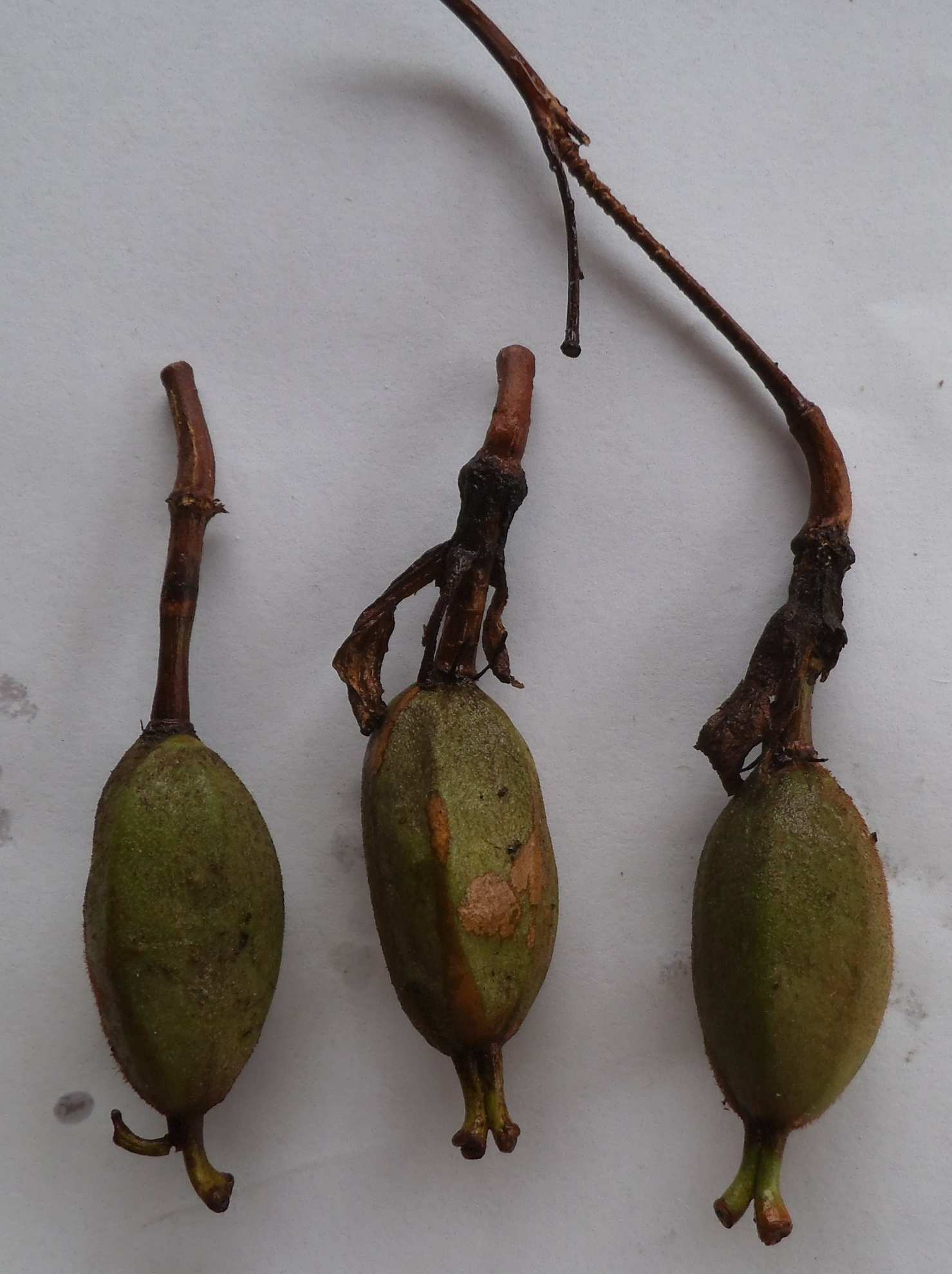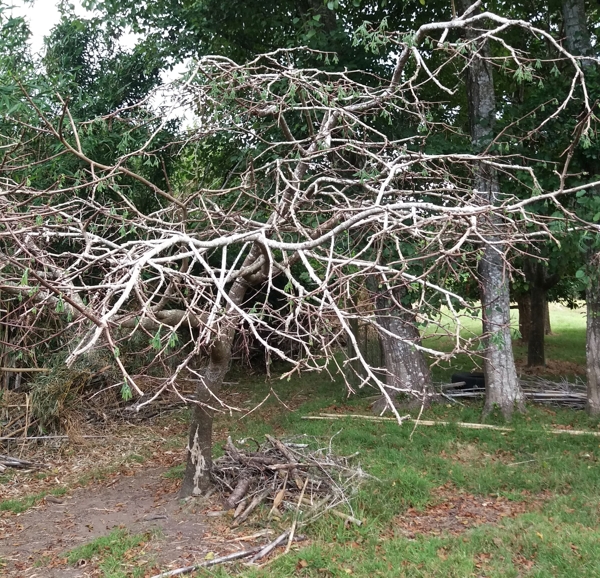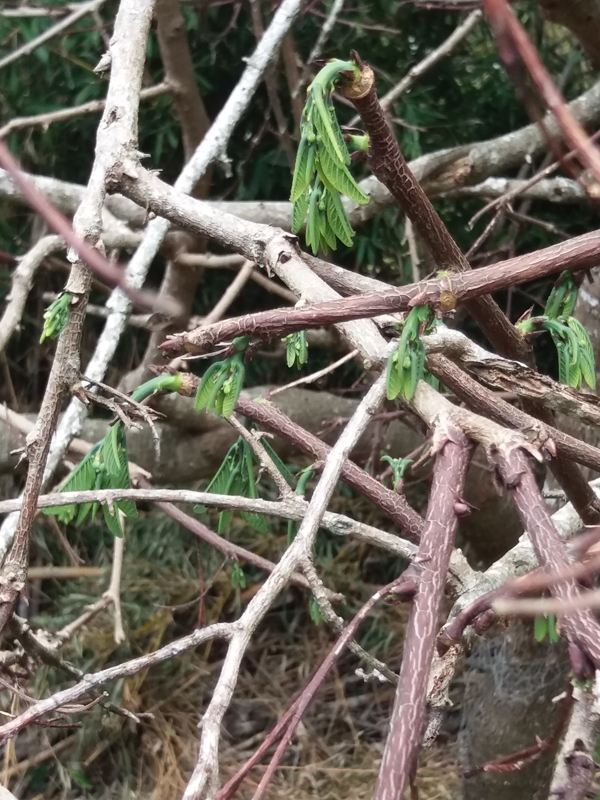Short Note on Passiflora
lindeniana in New Zealand
Laurie Meadows


Passiflora lindeniana flowering outdoors in Helensville,
New
Zealand
Passiflora lindeniana fruit, about actual size
Passiflora lindeniana is a very rare tree passionflower.
Vanderplank (2010) assesses it as endangered in its native habitat
of the cloud forests of the Venezuelan and Colombian lower Andes.
Many trees have been cut for firewood in the process of
deforestation. In addition, the larvae of a relatively new insect
pest Anastrepha dryas (a fruit fly of
the family Tephritidae) are destroying fruit
pods, inhibiting natural regeneration.
Seed purchased about 1994 (under the rules of the day, prior to restrictions effected in 1998) successfully germinated and yielded five plants (2 of which I donated to a specialist in exotica). Two of the Passiflora lindeniana grown outdoors flowered after about ten years. Fruit only set and matured when flowers were hand pollinated from another tree several hundred metres away.
These small trees are very slow growing. The tallest of the three
trees is only about 3.5 meters and a girth of 45 cm - after 24
years of growth. However, the tree has a double trunk, starting
near ground level, so the girth is for one of the 2 trunks
(another adjacent tree that has grown poorly has a girth of 22
cms). Mature trees in the wild are said to grow as high as 20
meters, and reach a girth of 1.25 meters. The trees have flowered
since 2005, taking ten years from planting out. A third plant
finally flowered for the first time in 2014, at around 20 years
old.
The trees flower very heavily under our North Auckland
conditions, but unless hand pollinated, no fruit sets. The fruit
are essentially inedible, so no effort was made to set fruit until
relatively recently, when I came to appreciate how rare and
valuable this germplasm is. A gift of 1,000 seeds was sent to a
USA based Passiflora interest group for further distribution
(via the Atlanta USDA Plant Inspection Station).
Today I noticed the fruit of the (possibly rare) tree passionfruit #Passifloralindeniana have fallen. The sheep were camping under the tree and kicked some #Passiflora_lindeniana fruit onto the path. Sent 1,000 seeds to USA Passiflora Soc a few years back, now I run over them 🤔 pic.twitter.com/O3SMEcBj7C
— Laurie Meadows (@Laurie_Meadows) November 28, 2018
This is the first recorded flowering and fruiting of this species
outside in any country of the world outside its native range
(pers. comm. John Vanderplank, november 2012). (It is likely that
there are other plants of this species flowering in New Zealand,
as in years past there have been several references on the
internet to specimens growing here. At least one plant was used as
a source of cuttings, so is likely to also be ten or eleven years
old, and therefore of flowering age).
All three trees growing outside are in moderate shade, one being
planted under an alder shelterbelt, the other being planted at the
back of a disused shadehouse, and overshadowed by an evergreen
magnolia. The former plant is in a moderately well drained silty
sand-clay loam, the latter is in a well drained leached sandy
loam. Air temperatures here do not fall much below about 5oC, and
daytime air temperatures rarely exceed 27oC in summer. This
temperature range is probably similar to the high elevation limits
of its natural range (2,700 meters).

